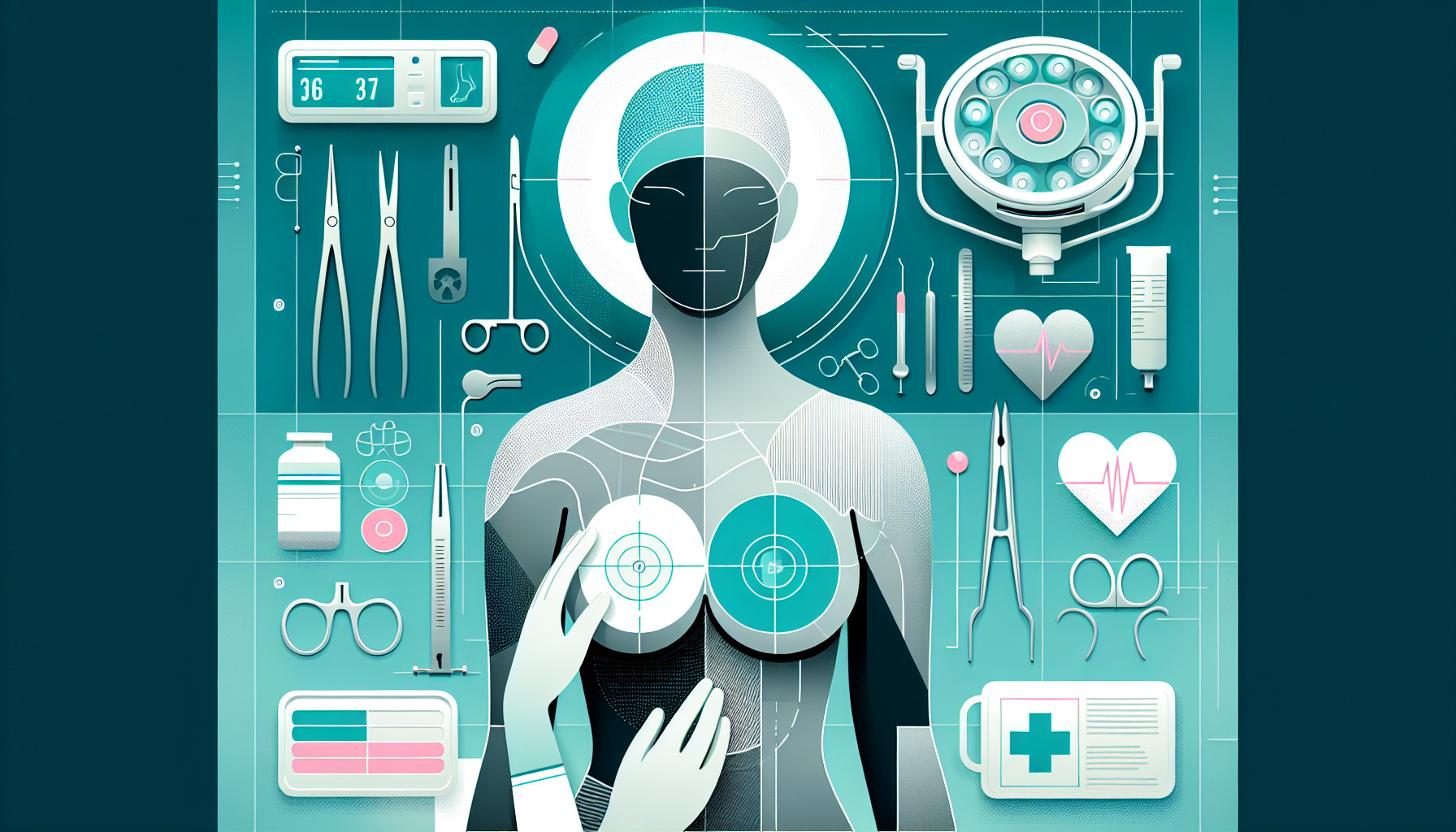Our Summary
This research paper discusses the challenges in reconstructing breasts for patients who have undergone mastectomy and are not suitable for a particular type of reconstruction technique using the deep inferior epigastric artery. It suggests that alternative sources of tissue for the reconstruction can be found in other areas of the body such as the back, thighs, and buttocks. However, these alternative methods require a higher level of surgical skill. The paper emphasizes that modern reconstructive surgeons should be proficient in these techniques, and that the choice of procedure should be tailored to each individual patient, regardless of the complexity of the operation.
FAQs
- What are some alternative donor sites for free flap transfer in autologous breast reconstruction?
- How does the level of expertise required for alternative flaps in breast reconstruction compare to traditional methods?
- How should the choice of flap for breast reconstruction be determined for each patient?
Doctor’s Tip
A doctor might tell a patient about breast reconstruction that it is important to discuss all available options with their surgeon, including alternative donor sites for free flap transfer if they are not eligible for a deep inferior epigastric artery perforator flap reconstruction. The choice of flap should be tailored to the individual patient and not limited by the difficulty of the surgery. It is important for the patient to work closely with their surgeon to determine the best approach for their specific situation.
Suitable For
Patients who are typically recommended for breast reconstruction include those who have undergone mastectomy for breast cancer or other medical conditions, those with a strong desire to restore their breast appearance, and those in good overall health. Some patients may not be eligible for certain types of breast reconstruction, such as deep inferior epigastric artery perforator flap reconstruction, due to factors such as body habitus or medical history. In these cases, alternative donor sites for free flap transfer, such as the back, thighs, or gluteal area, may be considered. These alternative flaps may require a higher level of expertise from the reconstructive microsurgeon, but can provide excellent results in suitable patients. Ultimately, the choice of flap for breast reconstruction should be tailored to each individual patient’s needs and preferences, and should not be limited by the perceived difficulty of the surgery.
Timeline
Before breast reconstruction:
- Diagnosis of breast cancer or decision to undergo prophylactic mastectomy.
- Consultation with a plastic surgeon to discuss options for breast reconstruction.
- Decision on the type of reconstruction (implant-based or autologous).
- Pre-operative assessments and preparations for surgery.
After breast reconstruction:
- Mastectomy surgery to remove the breast tissue.
- Reconstruction surgery using either implants or autologous tissue.
- Recovery period in the hospital and at home.
- Follow-up appointments with the plastic surgeon for monitoring and adjustments.
- Physical therapy and rehabilitation to regain strength and mobility.
- Final results of the breast reconstruction achieved, with improved appearance and self-confidence.
What to Ask Your Doctor
- What are the different options for autologous breast reconstruction using non-abdominal donor sites?
- How do the risks and benefits of using alternative donor sites compare to using the deep inferior epigastric artery perforator flap?
- What is the success rate of autologous breast reconstruction using non-abdominal donor sites?
- How experienced are you in performing autologous breast reconstruction using alternative donor sites?
- How will the choice of donor site affect the aesthetic outcome of the reconstruction?
- What is the recovery process like for autologous breast reconstruction using non-abdominal donor sites?
- Are there any long-term complications or considerations to be aware of with this type of reconstruction?
- How will the use of an alternative donor site impact the overall timeline for my breast reconstruction surgery?
- Are there any specific lifestyle changes or restrictions I should be aware of post-surgery?
- Can you provide me with before and after photos of patients who have undergone autologous breast reconstruction using non-abdominal donor sites?
Reference
Authors: Opsomer D, van Landuyt K. Journal: Clin Plast Surg. 2018 Jan;45(1):93-100. doi: 10.1016/j.cps.2017.08.012. Epub 2017 Sep 23. PMID: 29080664
